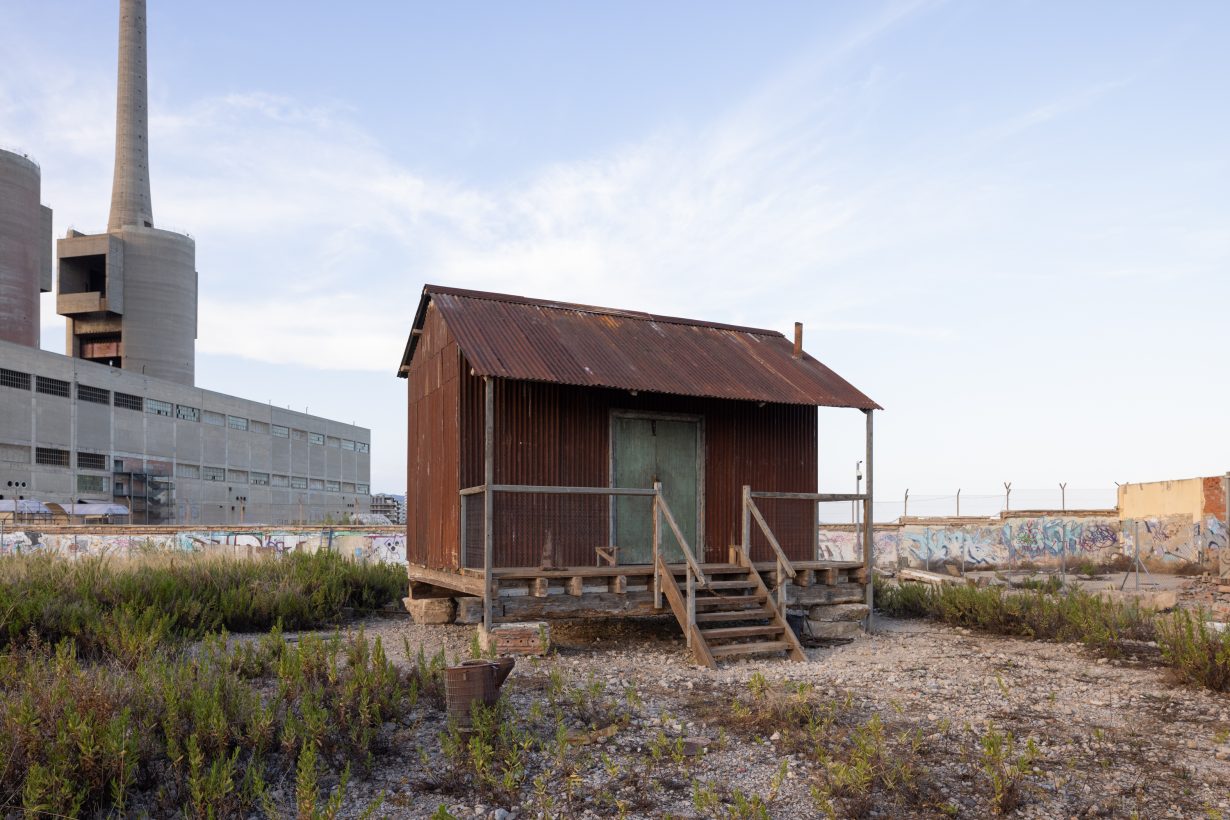The latest iteration of the nomadic biennial, stretching across the entire Barcelona metropolitan area, is spread far too thin
The industrial landmark repurposed as palace of culture makes for a potent symbol. Such spaces, often spectacular in scale, function as signifiers of holistic intent: here, a relic of an earlier era is transformed into a demonstration of the regenerative power of the arts, and usually underscored with socially and environmentally-conscious agendas. Art, in this context, is something akin to an agent for cultural rewilding, or an alternative cure-all for society’s ailments. The current iteration of Manifesta, stretching across the Barcelona metropolitan area, leans in hard on this formula. Its central exhibition, housed in the colossal Sant Adrià de Besòs power plant just beyond the city limits that has been shuttered and fenced off since 2011, deploys the 21 installations scattered throughout its interior and around its periphery as a demonstration of this kind of cultural reclamation. And yet the participating artists frequently take a pessimistic view of their own power to effect such change.
The power station itself, its three towering chimneys visible from across the region, has become a local landmark since it was built in the 1970s. The curatorial subtheme here – ‘Imagining Futures’ – focuses on the ecological consequences and afterlives of industry in the developed world. Art’s role in the promotion of industrial infrastructure is acknowledged with a projection of Dziga Vertov’s 1928 film The Eleventh Year, an avant-garde propaganda tool for the young Soviet Union’s modernisation programme. That Sant Adrià represented a pillar of Franco’s industrial strategy goes unmentioned, but the totalitarian parallels add a depth of complexity to the mix. Elsewhere, proceedings are solidly contemporary, tending towards the dystopian. See, for example, Kiluanji Kia Henda’s The Frankenstein Tree (2024), an eerie installation featuring wood salvaged from a nearby forest fire, bolted back together to form a dense thicket set within a recess on the ground floor. The artist may be able to ‘heal’ to an extent, but the ugly cartoon rivets holding the charred organic material in place remind that efforts to do so may be worse than futile.
Outside, Mike Nelson exploits the power plant’s monolithic qualities with Un Intruso (uninvited, into chaos) (2024), a shack created from discarded construction materials found in the vicinity. Inside, the title’s suggestion of intrusion becomes manifest: there is no ornament, just an iron bed frame and a tiny coal stove, which you half-expect to be still warm to the touch. A rudimentary window gives a view towards the chimneys, its frame isolating them and reinforcing the building’s strangeness. You could be looking at the cover of a progressive rock record or a 1970s sci-fi novel. What, we are left to speculate, is the ‘chaos’ alluded to in the title? It offers shades of Russell Hoban’s 1980 postapocalyptic novel Riddley Walker: are we to imagine ourselves as refugees from an environmental catastrophe, regarding the ruins of a civilisation for which we have lost all context?

Beyond the relatively concise and inherently interesting limits of the power station, the biennale is distinctly short on focus. Its other subthemes – ‘Balancing Conflicts’ and ‘Cure and Care’ – lack any distinct curatorial stamp, a conscious (and perhaps unwise) decision on the part of its chief ‘creative mediator’, Filipa Oliveira. If one of Manifesta 15’s key aims is to safeguard the Sant Adrià site as an artistic forum, another is to leave a lasting cultural infrastructure linking Barcelona’s satellite towns, ultimately intended to redistribute cultural clout from the crowded city centre to its periphery. Twelve municipalities participate, commandeering a number of venues, which include defunct textile factories, a panoptic prison, medieval churches, a seminary-turned-museum and a covered market, each harbouring either a solo presentation or loosely themed grouping of a dozen or so artists.
Yet the themes, and indeed many of the exhibits, feel somewhat underdeveloped; you sense in spreading itself across so immense a region, the Manifesta format may have stretched itself (and its budget) rather thin. There are arresting moments: in Granollers, Italian collective MASBEDO’s berserk Ghost Soldier (2024) simulates a rave within the confines of a Civil War-era air-raid shelter, replete with strobe lighting, hardcore soundtrack and excerpts from Civil Defence films showing the aftermath of bombing raids. But in a venue such as the Casa Gomis, a private modernist villa immediately bordered by the runway of El Prat Airport, the showing appears perfunctory, scattered politely throughout the rooms to leave preexisting artefacts undisturbed. Nor do the old industrial venues offer much in terms of spectacle, with many works hidden away in darkened corners.
The publications composing Manifesta 15’s official literature are peppered with references to ‘healing’, a slippery catchall that has become commonplace in the lingua franca of contemporary curating: it’s possible to conclude that this kind of curative language, imperceptible or unconvincingly expressed through its exhibits, is as platitudinous as it seems. In the grand scheme of culture-driven regeneration, art is often an afterthought – and this biennale does little to challenge such scepticism.
Manifesta 15, Various venues, Barcelona, 8 September – 24 November
